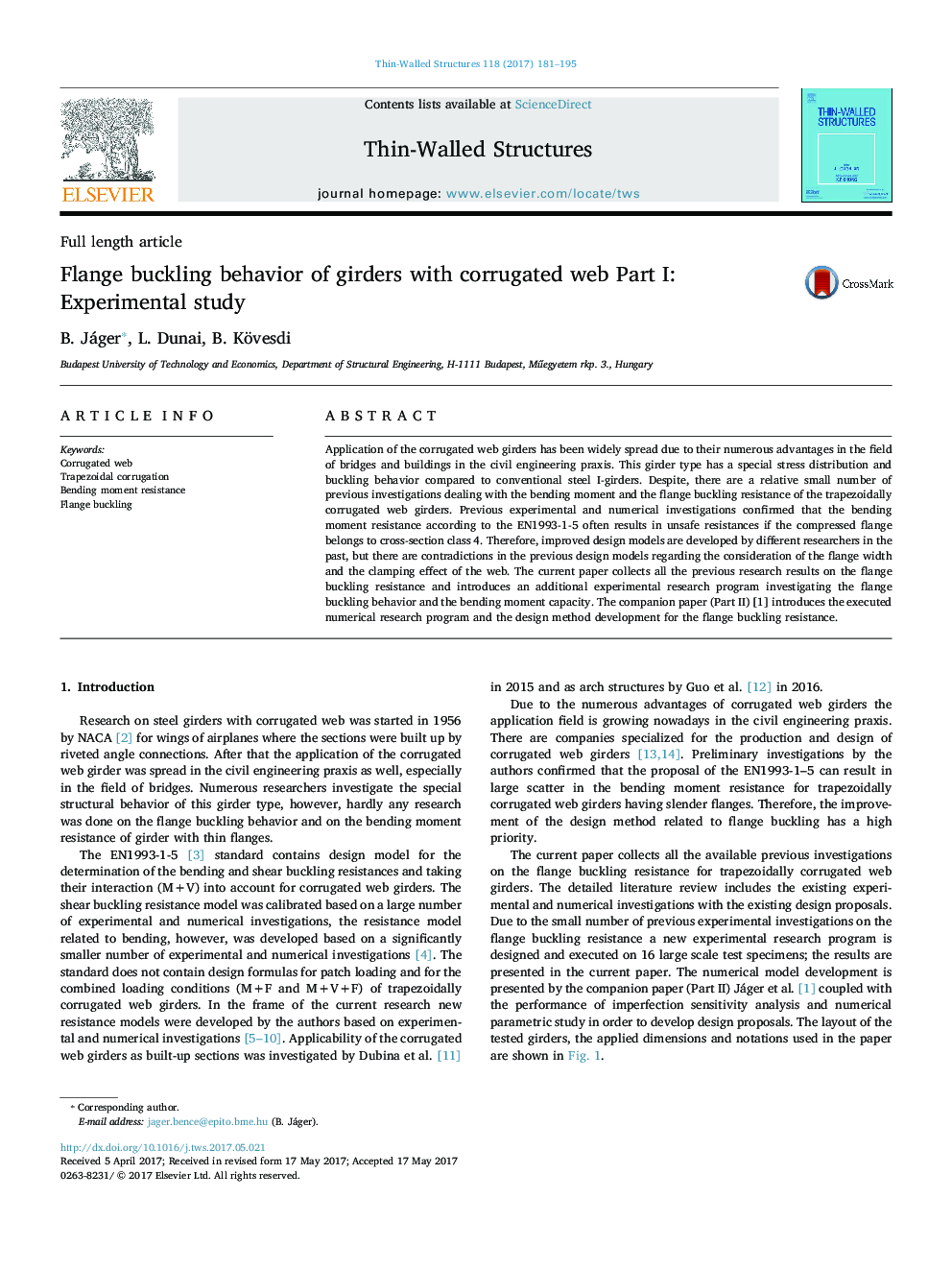| Article ID | Journal | Published Year | Pages | File Type |
|---|---|---|---|---|
| 4928404 | Thin-Walled Structures | 2017 | 15 Pages |
Abstract
Application of the corrugated web girders has been widely spread due to their numerous advantages in the field of bridges and buildings in the civil engineering praxis. This girder type has a special stress distribution and buckling behavior compared to conventional steel I-girders. Despite, there are a relative small number of previous investigations dealing with the bending moment and the flange buckling resistance of the trapezoidally corrugated web girders. Previous experimental and numerical investigations confirmed that the bending moment resistance according to the EN1993-1-5 often results in unsafe resistances if the compressed flange belongs to cross-section class 4. Therefore, improved design models are developed by different researchers in the past, but there are contradictions in the previous design models regarding the consideration of the flange width and the clamping effect of the web. The current paper collects all the previous research results on the flange buckling resistance and introduces an additional experimental research program investigating the flange buckling behavior and the bending moment capacity. The companion paper (Part II) [1] introduces the executed numerical research program and the design method development for the flange buckling resistance.
Keywords
Related Topics
Physical Sciences and Engineering
Engineering
Civil and Structural Engineering
Authors
B. Jáger, L. Dunai, B. Kövesdi,
